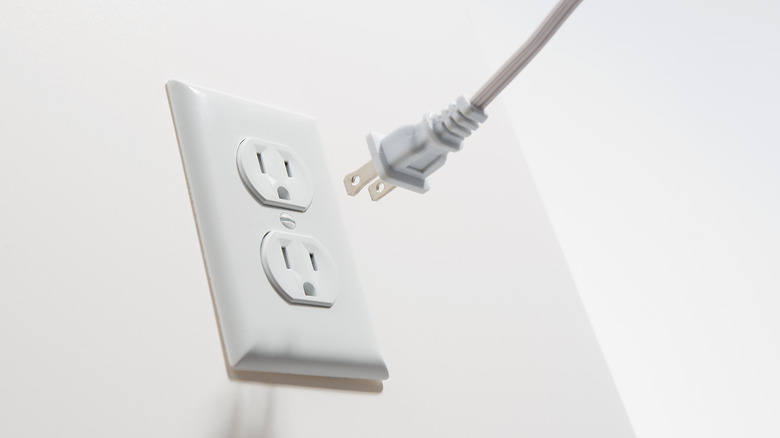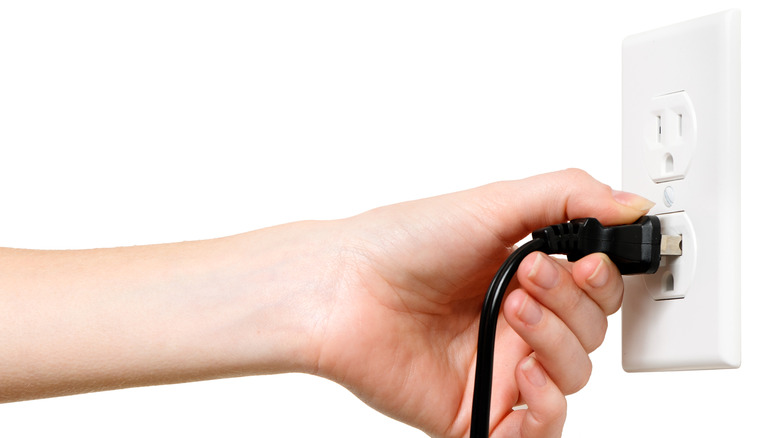Can You Plug A Two Prong Plug Into A Three Prong Outlet? (And What The Third Hole Is For)
We use plugs every day, but most of us don't spend a lot of time thinking about them. We know that there are various electrical plug types, even if we're not familiar with the ins and outs of all of them. If you're like many people, you probably plug your devices into several two-prong and three-prong outlets over the course of a day. At some point, you may have even stopped to ask yourself what the third prong is actually for and whether it's okay to use a two-prong plug in a three-prong outlet. The short answer: yes, it almost always is. That's because two-prong plugs are designed to fit the two vertical slots found on modern three-prong outlets.
The only time it might be an issue is if the device was supposed to have a third prong for safety, but doesn't, like if it was damaged or altered. But if it came with just two prongs, it's almost always designed to work safely without the third one. Grounded outlets with three slots have been required in new U.S. homes since 1962, which is why you see them in so many homes today. Still, that third prong can raise questions, especially when you're plugging in a two-prong device and wondering whether something's missing or if it's really safe to use.
Why some plugs have three prongs and others don't
The outlets you find in the U.S. today are typically grounded, meaning they have a third hole, either a rounded or U-shaped slot, that connects to a grounding wire in your home's electrical system. It's a safety feature that kicks in if there's a fault or short circuit, redirecting electricity into the ground, which protects you and your devices. Given that, it makes sense to ask why some electrical plugs have two prongs while others have three. Devices with only two prongs use what's called double insulation, which means they're built with two layers of non-conductive material and don't need a grounding wire. If their internal wiring shorts, the insulation keeps you safe, so there's no need for a ground. That's why it's generally safe to plug a two-prong plug into a three-prong outlet: those plugs are designed to work safely even without a grounding slot.
Still, grounding matters for some devices. If the device you're using has metal parts or draws a lot of power, like refrigerators, desktop computers, power tools, or microwaves, it'll usually come with a three-prong plug. If it didn't have that ground, a stray voltage could energize its casing, which could lead to an electric shock. The grounding prong is what gives that voltage a safe path back to earth. It trips the breaker and stops the dangerous current. That's why it's only safe to plug a two-prong plug into a three-prong outlet if it was built that way. You should never plug a device that originally had three prongs, whether they're missing, cut off, or bypassed with an adapter, into a three-plug outlet (grounded or not), because without that third prong, the device isn't properly grounded.

